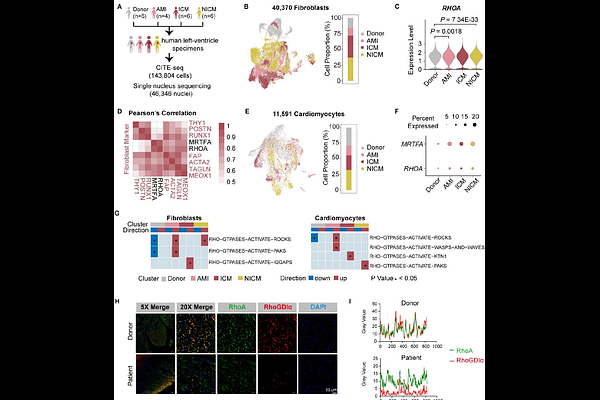Inhibiting RhoA Activation via GDP-state Stabilization to Relieve Heart Failure

Inhibiting RhoA Activation via GDP-state Stabilization to Relieve Heart Failure
Xue, M.; Liang, Y.; Yuan, Z.; Liu, X.; Chang, L.; Wang, Y.; Xu, P.; Zhang, T.; Jiang, H.; Zhao, Z.; Liu, J.; Ruan, S.; Ye, T.; Pang, X.; Mei, W.; Wang, J.; Sun, X.; Wang, H.; Cui, J.; Zu, Y.; Lin, X.; Zhao, Z.; Wang, R.; Huang, H.; Luo, C.; Tao, S.; Wang, J.; Duan, Y.; Zhu, L.; Tang, H.; Zhang, J.; Wang, Y.; Li, C.; Li, H.
AbstractHigh rates of heart failure (HF) morbidity and mortality have made targeting myocardial remodeling, particularly hypertrophy and fibrosis, a key therapeutic focus. RhoA, which regulates cytoskeletal reorganization and cell migration, plays a role in this process. However, RhoA has long been considered \"undruggable\", due to its strong binding to its endogenous substrates, GDP/GTP, and the lack of well-defined pockets for drug targeting. Here, we discovered a cryptic pocket proximate to GDP within RhoA and identified a natural product, AH001, binds here and interacts with GDP, stabilizing RhoA\'s interaction with its endogenous inhibitor, RhoGDIa;. AH001 reduced the downstream MRTFA nuclear translocation and downregulated fibrosis/hypertrophy proteins. Consequently, AH001 mitigated myocardial remodeling in multiple HF animal models, and in the 3D myocardial tissue model. Our findings highlight the therapeutic potential of inhibiting RhoA activation in myocardial remodeling, ultimately targeting HF, and offer a promising avenue for developing reversible inhibitors against undruggable GTPases.